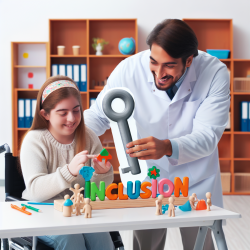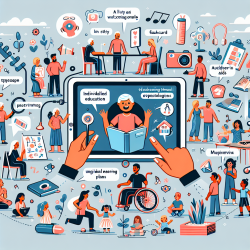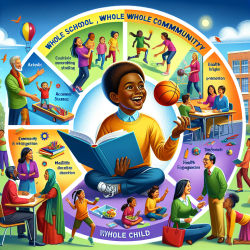As a Special Education Director, I continuously seek out the latest research and methodologies to support our dedicated practitioners in providing the most effective interventions for our students. The recent study, "Speech-Sound Discrimination and Articulation Errors in Children Aged 8-12," conducted by James C. McNutt, Ph.D., Bonnie Bryans, Ph.D., and Else Hamayan, Ph.D., offers valuable insights that could enhance our speech therapy practices.
The study delves into the complex relationship between speech-sound discrimination (SSD) and articulation errors, a topic that has garnered much attention yet remains controversial. Historically, SSD has been considered a cornerstone of articulation disorders, with many practitioners employing "ear training" as a key therapy technique. However, the findings of McNutt, Bryans, and Hamayan challenge this long-held belief, particularly in older children.
Through their rigorous research involving 99 children aged 8 to 12, the authors discovered no significant differences in SSD tasks between children with normal articulation and those with articulation problems. This groundbreaking finding suggests that, for school-aged children, misarticulations may not be directly related to deficits in SSD. Consequently, traditional ear training exercises aimed at improving SSD might not be as effective or relevant for this age group as previously thought.
For practitioners, this study emphasizes the importance of individualized assessment before implementing SSD-focused interventions. It encourages us to consider other factors that might contribute to articulation errors in older children and to explore alternative therapeutic approaches that address these specific needs.
Here are several ways practitioners can apply these insights to improve their skills and therapy outcomes:
- Conduct Comprehensive Evaluations: Before initiating therapy, assess each child's SSD capabilities alongside other potential contributing factors to their articulation errors.
- Explore Alternative Therapies: Given the study's findings, practitioners should be open to incorporating a broader range of therapy techniques that do not solely focus on SSD improvement.
- Stay Informed: Continuously seek out and study the latest research in speech therapy to ensure that interventions are based on the most current evidence.
- Engage in Professional Development: Participate in workshops, webinars, and conferences that discuss the latest findings and therapy techniques in speech pathology.
- Collaborate and Share: Work with colleagues to share findings, discuss challenging cases, and brainstorm innovative therapy ideas that go beyond traditional methods.
This study not only challenges conventional wisdom but also opens the door for further research and innovation in speech therapy practices. By embracing these findings, practitioners can enhance their therapeutic approaches, ultimately leading to more effective outcomes for children with articulation errors.
For those interested in delving deeper into the research and its implications, I highly recommend reading the original paper. To read the original research paper, please follow this link: Speech-Sound Discrimination and Articulation Errors in Children Aged 8-12.










